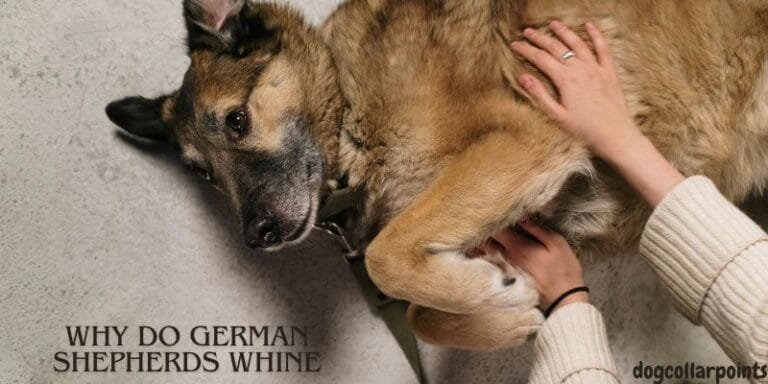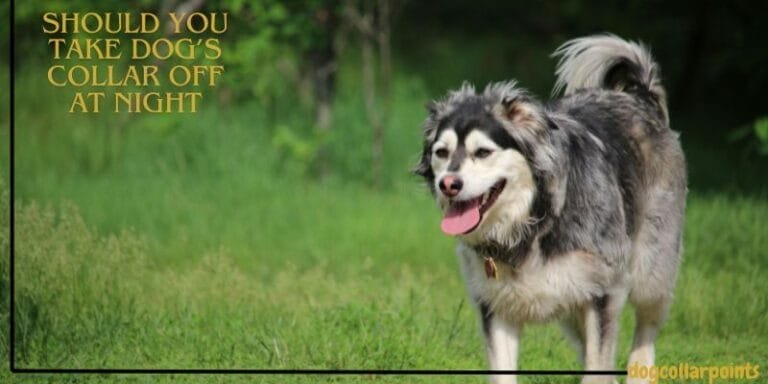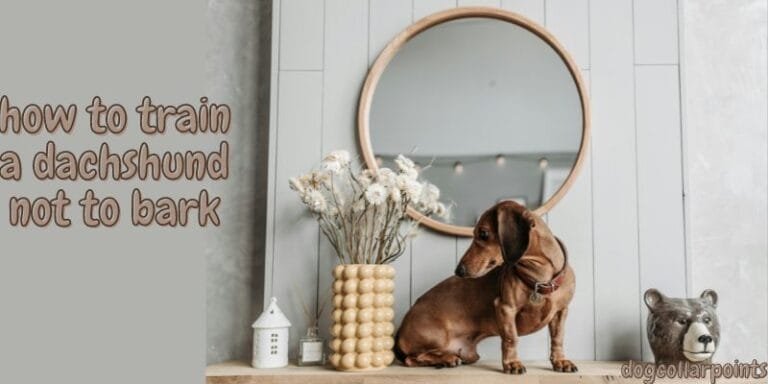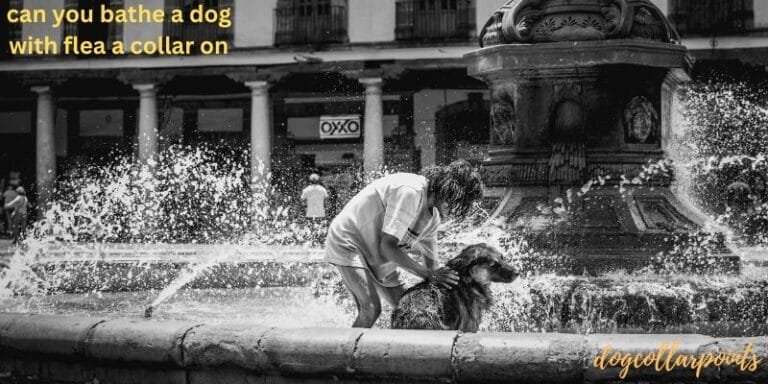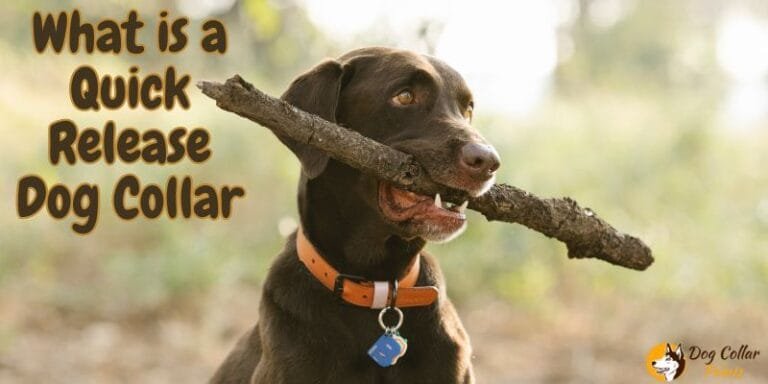How Tight Should Collar Be Dog

Are you struggling to find the perfect fit for your dog’s collar? Look no further! This comprehensive guide will provide you with tips and techniques on how to ensure your furry friend’s safety and comfort with the right collar. From understanding different types of collars to measuring your dog’s neck for the proper fit, we have got you covered.
Keep reading to learn more about how to keep your dog looking stylish and feeling secure with their new wearable accessory. So let’s dive into the question on every pet owner’s mind – How tight should a dog’s collar be? Stay tuned for valuable information that will help you make the best choice for your canine companion. Keep reading to find out more!
Types of Collars
Collars are an important accessory for any dog, serving as a way to display identification and keep them safe during walks. However, not all collars are created equal. Here are some of the most common types of collars and their purposes:
- Flat Collars: These are the most popular type of collar, commonly made from nylon or leather. They are perfect for everyday use and easily hold ID tags.
- Martingale Collars: These are best used for dogs with narrow heads, such as greyhounds. They tighten when the dog pulls, preventing them from slipping out of the collar.
- Choke Chain and Prong Collars: These collars should only be used under the guidance of a professional trainer as they are meant to be training tools, not everyday wear.
- Harnesses: While technically not a collar, harnesses are a great alternative for dogs that tend to pull or have respiratory problems as they distribute pressure more evenly.
Each type of collar serves a different purpose, and it’s important to choose the right one for your dog’s specific needs.
Special Type of Collar
In addition to the common types of collars mentioned above, there are also special types that serve unique purposes. These include:
- GPS Collars: These collars have a built-in GPS tracker, allowing you to track your dog’s location in real-time.
- Electric Shock Collars: Similar to choke chain and prong collars, these should only be used under the guidance of a professional as they deliver an electric shock to discourage certain behaviors.
- Head Collars: These collars fit around the dog’s snout and work by controlling their head movements, making it easier to train them not to pull on the leash.
It’s important to research and carefully consider whether these special types of collars are necessary for your dog before using them. Consult a professional trainer or veterinarian for guidance if needed. So, keep your dog’s safety and comfort in mind when choosing the right type of collar for them. Let’s continue on to learn how to properly fit a collar on your furry friend.
How to Measure Your Dog’s Neck
Proper measurement is crucial for finding the right size collar for your dog. To measure their neck, use a soft tape measure or a piece of string and then measure it against a ruler. Here are some tips to keep in mind:
- Leave enough space for two fingers to comfortably fit between the collar and your dog’s neck.
- Measure at the base of the neck, where it meets the shoulders, for a more accurate fit.
- If your dog has thick fur, take this into account and add a few inches to ensure the collar fits comfortably.
Remember to measure your dog’s neck periodically as they grow and change. A well-fitted collar is essential for their safety and comfort. Next, we’ll discuss how tight the collar should be on your dog.
How Tight Should a Dog Collar Be?
One of the most common questions dog owners have is how tight their dog’s collar should be. The answer is that it should be snug enough to stay in place, but not too tight that it causes discomfort or breathing difficulties.
To ensure the proper fit, check the collar regularly as your dog grows and gains or loses weight. You should be able to easily slide two fingers between the collar and your dog’s neck. If you can’t, it may be too tight and could cause discomfort or injury.
Additionally, make sure to check for any signs of irritation or chafing around your dog’s neck. This is a sign that the collar may be too tight and needs adjusting.
Remember, a well-fitted collar is crucial for your dog’s safety and comfort. If you have any concerns or questions about the fit, consult a professional for guidance.
How to Properly Fit a Collar on Your Dog
Now that you have an understanding of the different types of collars, it’s important to learn how to properly fit one on your dog. Improperly fitting collars can cause discomfort, injury, and even lead to accidents. Here are the steps you should follow:
Step 1: Measure Your Dog’s Neck
Using a soft measuring tape, measure the circumference of your dog’s neck at its widest point, usually just below their ears. Add 1-2 inches to this measurement for comfort.
Step 2: Choose the Right Size
Using your dog’s measurement, choose a collar size that falls within that range. Keep in mind that different brands and types of collars may have different sizing methods, so always refer to the manufacturer’s guidelines.
Step 3: Check the Fit
Once you have the collar on your dog, make sure there is enough room to fit two fingers between the collar and their neck. If it’s too tight, it can cause choking or discomfort. If it’s too loose, they may slip out of the collar.
Step 4: Adjust if Needed
If needed, adjust the collar to ensure a proper fit. It should be snug enough that it won’t slip off, but not so tight that it causes discomfort.
Step 5: Monitor for Comfort
Finally, monitor your dog’s comfort level with the collar. If they are constantly scratching or trying to remove it, it may be too tight or uncomfortable for them. Make necessary adjustments or try a different type of collar if needed.
Should I Take My Dog’s Collar off at Night?
Some dog owners wonder if they should remove their dog’s collar at night. While there is no right or wrong answer, it ultimately depends on the individual dog and their specific needs.
Here are some points to consider when deciding whether to leave your dog’s collar on overnight:
- If your dog has a tendency to scratch excessively at their collar, it may be best to remove it at night to prevent irritation or injury.
- Dogs that are very active at night, such as those that sleep outside, may benefit from having their collar left on for identification purposes in case they get lost.
- Some dogs may simply prefer not to wear a collar while sleeping and may find it more comfortable without one.
Ultimately, it’s important to prioritize your dog’s safety and comfort when making this decision.
Conclusion | How Tight Should Collar Be Dog
In conclusion, choosing the right collar for your dog is an important decision that should not be taken lightly. It’s crucial to consider factors like size, fit, and comfort when selecting a collar for your furry friend. Proper measurement and regular checks are essential for ensuring the collar fits correctly and does not cause any discomfort or harm.
Remember, a well-fitted collar not only keeps your dog safe but also allows them to feel comfortable and happy. So, take the time to properly fit a collar on your dog and regularly check its fit as they grow and change. With the right collar, you can keep your furry companion safe and stylish at the same time. So, make sure to choose wisely and prioritize your dog’s comfort above all else.
Frequently Asked Questions (FAQs)
How loose is too loose for a dog collar?
The general rule of thumb is that you should be able to fit two fingers between your dog’s neck and the collar. If it is looser than this, it may be too loose and could potentially slip off, leading to safety concerns.
What is the two finger rule for dog collars?
The two finger rule is a common guideline for fitting dog collars. It means that there should be enough room between the collar and your dog’s neck to comfortably fit two fingers. This ensures that the collar is not too tight and does not cause discomfort or harm.
How do I know if my collar is too loose?
If you can easily slide more than two fingers between the collar and your dog’s neck, it may be too loose. Additionally, if your dog is constantly scratching or trying to remove the collar, it may be a sign that it is too loose and needs adjusting.
Should dogs wear collars 24/7?
This ultimately depends on the individual dog and their specific needs. Some dogs may benefit from wearing a collar at all times for identification purposes, while others may find it more comfortable to have their collar removed at night. Consider your dog’s habits and preferences when making this decision.

